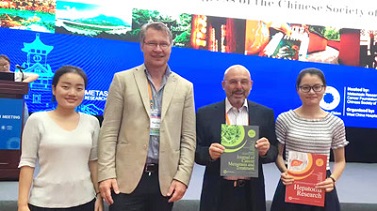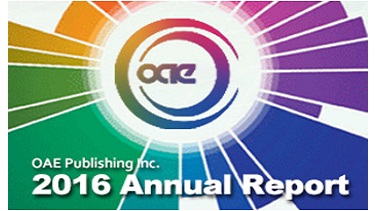M&TOD 2024 Best Paper Award Announced
In 2024, Metabolism and Target Organ Damage (M&TOD) remained at the forefront of research on metabolic disorders, target organ damage, and related diseases, providing a high-level academic exchange platform for researchers worldwide. Over the past year, we have witnessed the publication of numerous groundbreaking studies that have not only advanced the field of metabolic sciences but also had profound clinical implications.
To recognize the outstanding contributions of our authors, the M&TOD Editorial Office carefully selected the Best Papers of 2024 based on multiple factors, including peer review evaluations, readership metrics, downloads, citation impact, and overall academic influence. After a rigorous selection process, three papers were recognized for their significant scholarly value in the field of metabolism and target organ damage research.
Congratulations to the authors of the awarded papers! Each winning paper will receive a certificate and a monetary prize.
2024 Best Papers
1. Title: Liver Fibrosis in Nonalcoholic Fatty Liver Disease Patients: Noninvasive Evaluation and Correlation with Cardiovascular Disease and Mortality
Corresponding Author: Stefano Ballestri
Key Points:
This review provides an overview of the cellular and molecular pathogenesis of liver fibrosis, with a focus on noninvasive assessment methods. Findings highlight that biomarkers of liver fibrosis, particularly the FIB-4 index and elastography techniques, are effective in predicting all-cause mortality and major cardiovascular events in patients with nonalcoholic fatty liver disease (NAFLD). Additionally, the study explores the mechanistic links between liver fibrosis and cardiovascular risk in NAFLD patients, emphasizing the importance of noninvasive evaluation in baseline assessment, long-term monitoring, and treatment response evaluation. Optimizing noninvasive fibrosis assessment strategies may enhance prognostic accuracy for NAFLD patients and provide a more reliable scientific basis for comprehensive disease management.
Read the full article:https://www.oaepublish.com/articles/mtod.2022.23

(Graphical Abstract)
2. Title: Metabolic Primary Liver Cancer in Adults: Risk Factors and Pathogenic Mechanisms
Corresponding Author: Simonetta Lugari
Key Points:
As the incidence of viral chronic liver disease (CLD) declines, the prevalence of metabolic-associated CLD continues to rise, leading to an increasing burden of primary liver cancer (PLC) in Western countries. Studies indicate that metabolic comorbidities—such as obesity, type 2 diabetes, and dyslipidemia—have become critical risk factors for hepatocellular carcinoma (HCC) and cholangiocarcinoma (CC). In the context of systemic metabolic dysfunction, immune dysregulation, cellular alterations, chronic inflammation, abnormal molecular signaling pathways, and genetic mutations collectively drive PLC pathogenesis. This study underscores the importance of understanding the mechanisms underlying metabolic-related PLC to facilitate early detection and screening in high-risk populations, advance precision medicine, develop chemoprevention strategies, and optimize novel therapeutic approaches, ultimately improving patient outcomes and management strategies.
Read the full article:https://www.oaepublish.com/articles/mtod.2022.38

(Graphical Abstract)
3. Title: Mechanobiology in the Development and Progression of Nonalcoholic Fatty Liver Disease: An Updated Review
Corresponding Author: György Baffy
Key Points:
This review highlights the pivotal role of mechanobiology in the progression of nonalcoholic fatty liver disease (NAFLD), examining how mechanical forces regulate hepatocyte function and pathological changes. The article provides a comprehensive analysis of the impact of mechanical stimuli on NAFLD pathogenesis and proposes novel perspectives on leveraging mechanobiology for therapeutic interventions and disease modification.
Read the full article:https://www.oaepublish.com/articles/mtod.2022.37

(Schematic illustration of mechanical interfaces and components of mechanotransduction)
The growth and success of M&TOD would not be possible without the dedicated support of researchers, reviewers, and Editorial Board members. We extend our sincere gratitude to all authors for their valuable contributions to the scientific community and to our readers for their continued engagement and support. These award-winning articles not only highlight key research directions in the field of metabolism and target organ damage but also lay a solid theoretical foundation for future studies. Looking ahead, M&TOD remains committed to publishing high-quality research, fostering global academic exchange, and advancing the understanding and clinical translation of metabolic diseases.
Editor: Tilda Li
Language Editor: Catherine Yang
Production Editor: Ting Xu
Respectfully Submitted by the Editorial Office of Metabolism and Target Organ Damage




